I find myself repeatedly looking for a clear definition of the differences of nil?, blank?, and empty? in Ruby on Rails. Here's the closest I've come:
blank?objects are false, empty, or a whitespace string. For example,""," ",nil,[], and{}are blank.nil?objects are instances of NilClass.empty?objects are class-specific, and the definition varies from class to class. A string is empty if it has no characters, and an array is empty if it contains no items.
Is there anything missing, or a tighter comparison that can be made?


